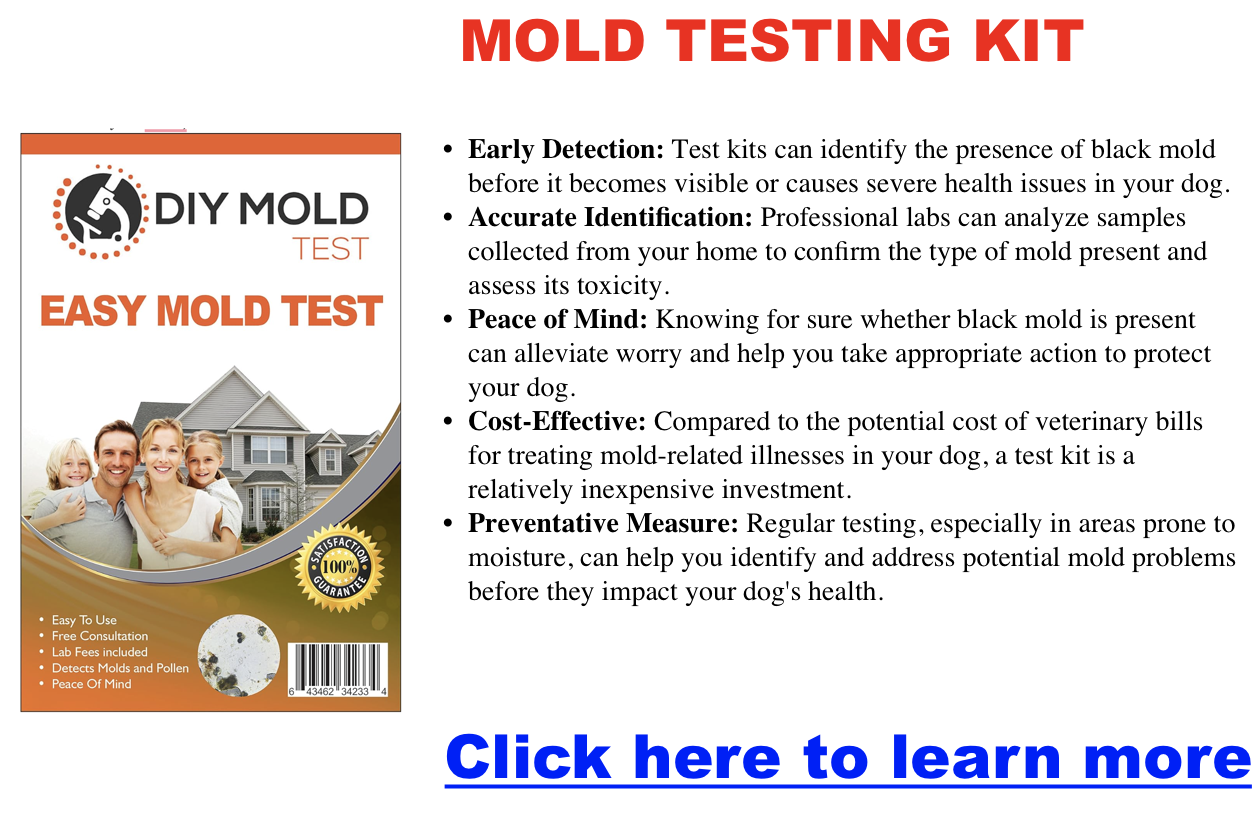Symptoms of Black Mold Exposure in Dogs
As a devoted pet owner, your dog’s well-being is paramount. But did you know that a hidden danger lurking in your home could be putting your furry friend at risk? Black mold, a seemingly innocuous fungus, can pose a significant threat to both humans and animals.
Today, we’ll delve into the dangers of black mold exposure in dogs, arming you with the knowledge to recognize the signs and take prompt action to protect your beloved companion.

What is Black Mold and Why is it Dangerous?
Black mold, known as Stachybotrys chartarum, is a fungus that thrives in damp, humid environments. It often lurks in areas of your home prone to moisture, like bathrooms, basements, or areas with water leaks.
The real danger lies in the mycotoxins that black mold releases into the air. These toxic substances can be inhaled or absorbed through the skin, triggering a range of health issues in both humans and animals.
Recognizing the Symptoms of Black Mold Exposure in Dogs:
Just like us, dogs can suffer adverse reactions to black mold exposure. While some dogs may exhibit no symptoms at all, others may experience a range of health problems, including:
Respiratory Issues:
- Coughing
- Sneezing
- Difficulty breathing or wheezing
- Nasal discharge or runny nose
- Bleeding from the nose or mouth
Skin Problems:
- Excessive scratching, licking, or biting
- Redness or inflammation of the skin
- Rashes or hives
- Hair loss or thinning fur
- Dry, flaky skin
General Symptoms:
- Lethargy or fatigue
- Loss of appetite or decreased food intake
- Vomiting or diarrhea
- In severe cases, tremors or seizures
If you observe any of these symptoms in your dog, and especially if you suspect they’ve been exposed to black mold, it’s imperative to seek veterinary care immediately.
What to Do if You Suspect Your Dog Has Been Exposed to Black Mold:
- Contact your veterinarian right away. Inform them of your concerns and any symptoms your dog is exhibiting.
- If possible, safely collect a sample of the suspected mold for testing and identification.
- Follow your veterinarian’s guidance for treatment and management of your dog’s health.
- Address the source of the mold problem in your home to prevent further exposure.
Preventing Black Mold Exposure in Dogs:
Here are some tips to keep your home mold-free:
- Control humidity levels with dehumidifiers or proper ventilation.
- Fix leaks and water damage promptly.
- Ensure adequate ventilation in bathrooms and kitchens.
- Regularly inspect and clean areas prone to moisture buildup.
